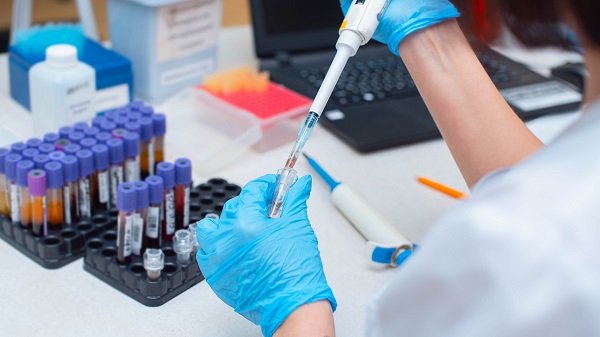The best way to measure the spread of COVID-19 in a community
When the COVID-19 pandemic began, it was hard to know whether the steps taken to control the spread of the virus had worked. As people with the disease can experience mild symptoms, or even remain asymptomatic, one of the main hurdles was getting an accurate picture of how many people had been infected during the first epidemic wave in Sydney (March–April, 2020). It was a question a team co-led by the National Centre for Immunisation Research and Surveillance (NCIRS), the Kirby Institute at the University of New South Wales, and NSW Health Pathology’s Institute of Clinical Pathology and Medical Research (ICPMR) wanted to answer.
The answer, explains Heather Gidding, was obtained using serosurveillance. “We’ve used this tool since the late 1990s when it was employed to measure the impact of a mass measles vaccination campaign,” says Gidding, an associate professor at the University of Sydney who also works at NCIRS. “As a result of that campaign and ongoing high infant vaccination coverage, measles has been eliminated in Australia.”

Serosurveillance works by measuring antibodies present in the blood against a particular disease, showing whether a person has come into contact with it – regardless of whether they fell ill. Thanks to funding from NSW Health, the technique was turned on COVID-19.
As SARS-CoV-2, the virus that causes COVID-19, is new, initially there was no test available that could do the job. But rapid work by staff at the Westmead Hospital’s Institute of Clinical Pathology and Medical Research soon meant the research team had a way to detect COVID-19 antibodies. “We had a very robust test that could detect past infection,” Gidding says, “and we thought antibodies from infections during the first epidemic wave would still be detectable when we did our serosurvey.”
With a test in place, the next step was to obtain a sample of the population, focusing on Sydney – the area that suffered most during the first outbreak in Australia. “Our aim was to estimate the proportion of the population in Sydney that had antibodies as a measure of the spread of infection,” Gidding says. As it wasn’t feasible to take a random sample from people in the community, the study utilised de-identified blood samples collected as part of routine healthcare interactions unrelated to COVID-19 from three populations: outpatients visiting hospital or private pathology clinics for a pathology test; pregnant women undergoing a routine check-up; and blood donors. In collaboration with Australian Red Cross Lifeblood and public and private diagnostic laboratories across Sydney, the team began their collection in late April, before finishing in early June. The samples collected from each of the three populations were then analysed to see if there was a hidden group of people who’d been infected with COVID-19 without their knowledge.
“Even though the populations were different, we found they all gave similar estimates [of COVID-19 spread in the community],” Gidding says. “Somewhere between 0.15% (for outpatients of all ages) and 0.79% (pregnant women). That provides us with quite strong evidence that there was very limited transmission that wasn’t detected during the first wave.” Multiplying the team’s estimate of 0.15% by the 5 million-strong population of Sydney, they calculated that around 7450 people had been infected in the city during the first epidemic wave – around three and a half times the official reported figure of 2100 people. While this sounds high, Gidding points out the numbers actually show a success story. “If you think about what’s being reported in the US, around 100,000 cases a day, that’s very low,” she says. “It just shows that the rapid implementation of measures to reduce the spread in New South Wales really did work.”
The surveillance methods can now be taken to a national level, providing valuable evidence about what to do if further outbreaks occur. “[We’ve shown] control can be successful,” Gidding says. “And we know the best way to control respiratory diseases is good hand hygiene and social distancing. It’s a really good lesson to learn for future pandemics that allows time for a vaccine to be developed.”
Updated 4 years ago